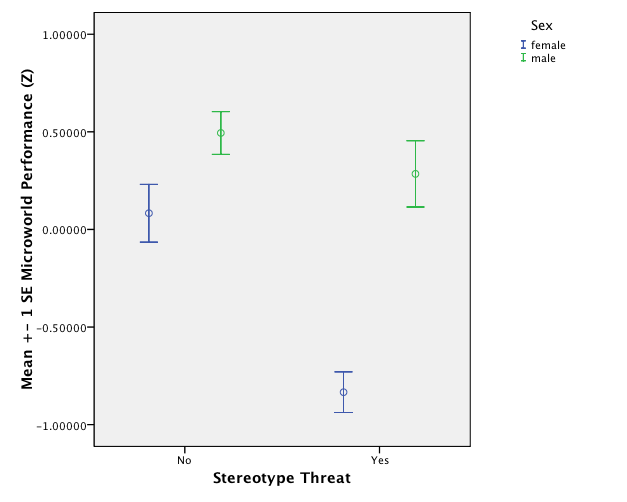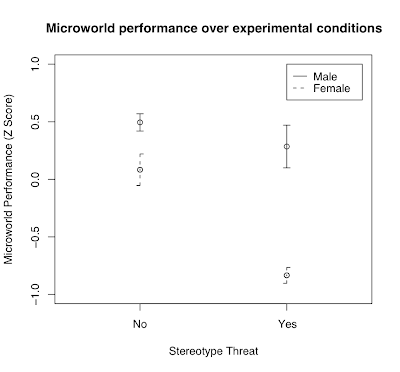(special circumstances require a post in German)
Unsere Studie gibt die Interpretation, dass "Facebook-Verweigerer" (Morgenpost) mehr Berufserfolg als Facebook-Nutzer hätten, nicht her.
Im Jahr 2007 publizierten Ellison, Steinfield und Lampe eine Studie [1], in der sie einen Zusammenhang zwischen der Nutzungsintensität der Online-Plattform Facebook und dem sozialen Kapital von amerikanischen College-Studenten feststellten. Dies könne sich wiederum positiv in anderen Lebensbereichen auswirken. Zitat: "our findings demonstrate a robust connection between Facebook usage and indicators of social capital, especially of the bridging type. ... Such connections could have strong payoffs in terms of jobs, internships, and other opportunities" (S. 1164).
Meine Studentin Anett Cepela kam auf die Idee, die Studie zu replizieren. Mich wunderte an der Original-Studie, dass die Autoren die Nutzung von Facebook als unabhängige Variable verwendeten, d.h., die Nutzungsintensität von Facebook nicht mit weiteren Variablen erklärten.
Ich schlug daraufhin vor, die Studie um einen Persönlichkeitsfragebogen zu erweitern. Wir erstellten einen neuen Fragebogen, der die Skalen der Originalautoren verwendete: Facebook-Nutzungsintensität, soziales Kapital (bridging, bonding, maintaining), Selbstwert, und Lebenszufriedenheit. Zusätzlich enthielt er die "Big Five" Persönlichkeitsmerkmale Extraversion, Neurotizismus, Gewissenhaftigkeit, Verträglichkeit und Offenheit. [2]. Der Fragebogen war so gestaltet, dass zu Anfang gefragt wurde, ob man ein Profil auf Facebook habe. Wurde diese Frage mit Nein beantwortet, wurde gefragt, ob ein Profil auf einer anderen Plattform bestünde. Es folgten die Fragen zur Nutzungsintensität von Facebook oder, alternativ bei den Nutzern anderer Plattformen, zur Nutzungsintensität der am häufigsten genutzten Plattform. TeilnehmerInnen, die nirgends ein Profil hatten, wurden nicht nach Nutzungsintensität gefragt, konnten aber die anderen Skalen des Fragebogens beantworten. Die Zürcher Pendlerzeitung "20 Minuten" druckte einen Aufruf zur Teilnahme in ihrer Printausgabe.
Ca. 1000 Personen füllten den Fragebogen zumindest teilweise aus. Wir erhielten 681 vollständig ausgefüllte Fragebögen, davon 345 von weiblichen und 336 von männlichen Personen. Das Alter unser Befragten reichte von 13 bis 89 Jahre, mit einem Durchschnittsalter von 27 Jahren. 573 der Befragten gaben an, ein Profil bei Facebook zu haben. Davon hatten mehr als die Hälfte (335) noch ein Profil auf einem anderen sozialen Netz (z.B. mySpace oder XING). 46 der Befragten hatten kein Profil bei Facebook, aber bei einem anderen Netzwerk. Nur 62 Personen gaben an, überhaupt kein Profil auf irgendeinem sozialen Netzwerk zu haben. Letztere waren im Durchschnitt 37 Jahre alt, die Nutzer von sozialen Netzwerken waren im Durchschnitt 26 und gaben an, im Durchschnitt 187 Freunde auf ihrem meistbenutzten sozialen Netzwerk zu haben.
Wir haben anschliessend für die Nutzer von sozialen Netzwerken analysiert, welche Faktoren ihre Lebenszufriedenheit beeinflussen. Genau genommen haben wir ein Strukturgleichungsmodell in LISREL mit den latenten Variablen Extraversion, soziales Kapital, Facebooknutzung und Lebenszufriedenheit berechnet. Wir verwendeten zur Parameterschätzung den WLS-Algorithmus für ordinal skalierte Daten [3].
Im Ergebnis zeigt sich tatsächlich, dass eine höhere Nutzungsintensität (mehr Freunde, mehr Zeit auf der Plattform) dazu führt, dass die Nutzer über mehr soziales Kapital verfügen und zufriedener sind, wenn man ihre Persönlichkeit ausser acht lässt. Nimmt man jedoch die Extraversion als Persönlichkeitseigenschaft in die Berechnung auf, verschwinden die Zusammenhänge fast gänzlich: Je stärker die Extraversion eines Menschen, desto mehr soziales Kapital hat er, und desto mehr ist er auf Facebook unterwegs und desto zufriedener ist er. Aber diese drei Dinge hängen vor allem von der Persönlichkeit ab. Die Effekte der Facebook-Nutzung auf das soziale Kapital und auf die Lebenszufriedenheit sind unter Berücksichtigung der Effekte der Extraversion kaum vorhanden. Genau gesagt: Der standardisierte ß-Koeffizient zwischen Facebook-Nutzung und bridging social capital beträgt in Gegenwart der Extraversion nur 0.08. Laut Cohen [4] kann man bei Korrelationen unter .10 nicht mal mehr von einem schwachen Effekt sprechen.
Das war das zentrale Ergebnis unserer Studie. Dieses Ergebnis halte ich statistisch für abgesichert und belastbar. Die Ergebnisse stehen somit im Widerspruch zu den Ergebnissen der Amerikaner.
Leider habe ich mich dazu hinreissen lassen, die 62 Personen in unserer Stichprobe, die nicht auf Facebook sind, mit den 619 Nutzern von sozialen Netzwerken (573 Facebooknutzer + den 46 Nutzer anderer Netze, die nicht auf Facebook sind) explorativ zu vergleichen. Es zeigte sich eine leicht erhöhte durchschnittliche Lebenszufriedenheit bei den Nicht-Nutzern (M = 5.39) als bei den Nutzern (M = 5.11, t(74.16) = 1.83, p = .07, Cohens d = 0.24). Dies war nicht auf Alterseffekte zurückzuführen, da Alter und Lebenszufriedenheit in der Gesamtstichprobe schwach negativ zusammen hingen (ß = -.06, p = .08). Der Unterschied zwischen den Gruppen in der Persönlichkeitseigenschaft Gewissenhaftigkeit fiel etwas deutlicher zugunsten der Nicht-Nutzer aus (t(73.70) = 2.36, p = .02, Cohen's d = .32). Allerdings gab es in der Gesamtstichprobe einen schwachen positiven Zusammenhang zwischen Alter und Gewissenhaftigkeit (ß = .12, p = .001). Deshalb kann dieser sowieso kleine Effekt auf das Alter der Teilnehmer in den unterschiedlichen Nutzergruppen zurück geführt werden. Alle Analysen, die ich in diesem Absatz berichtet habe, habe ich explorativ gerechnet. Die Effekte sind schwach und aufgrund der sehr kleinen Gruppe der Nicht-Nutzer (62 Personen) nicht belastbar. Von Repräsentativität ganz zu schweigen.
Nun habe ich einer Mitarbeiterin unser Kommunikationsabteilung ein Interview zu den Ergebnissen unserer Studie gegeben, deren Ergebnisse noch nicht mal publiziert sind. Das war wahrscheinlich mein zweiter Fehler. Der dritte Fehler war, im Interview nicht nur die belastbaren Ergebnisse zu berichten, sondern auch die explorativen. Ich habe dabei auch Studienergebnisse von dritter Seite berichtet [5], die einen Zusammenhang zwischen Gewissenhaftigkeit und Berufserfolg herstellen. Ich habe mich dabei zu der Aussage hinreissen lassen, dass man vermuten könnte, dass Facebook-Nutzer weniger Gewissenhaft seien und weniger Berufserfolg hätten, als Nicht-Nutzer. Ich habe das sofort relativiert, indem ich auf den Alterseffekt und auf die sehr kleine Gruppe der Nicht-Nutzer hingewiesen habe.
In dem Artikel, den die Kommunikationsabteilung unserer Universität geschrieben hat, wurden die explorativen Ergebnisse auch erst am Schluss berichtet. Dort steht:
Und wie fühlen sich die Nicht-Nutzer von Facebook? Von den total 681 Befragten hatten 46 kein Profil bei Facebook, jedoch bei einem anderen Netzwerk, und 62 gaben an, überhaupt kein Profil auf irgendeinem sozialen Netzwerk zu haben.
«Aufgrund der kleinen Anzahl der Teilnehmer gänzlich ohne Facebook-Erfahrung muss man die Aussagen zu dieser Gruppe mit Vorsicht geniessen», warnt Meyer. Doch könne man sagen, dass der sich abzeichnende Trend eine interessante Implikation habe: Mehrere Studien zeigen, dass Gewissenhaftigkeit – eines der Big-Five-Merkmale – positiv mit dem Berufserfolg zusammenhängt.
Die Ergebnisse der Facebook-Studie legen nun nahe, dass die Nicht-Nutzer eher gewissenhaft sind. Daraus könne man rückfolgern, dass engagierte Facebook-Nutzer weniger Berufserfolg haben als solche, die Facebook wenig oder gar nicht nutzen. «Denn Menschen, die nicht auf sozialen Netzwerken sind, sind gewissenhafter und sie haben in der Regel mehr Berufserfolg», so Meyer. Allerdings sind sie auch älter als die Facebook-Nutzer, was bei diesen Ergebnissen eine Rolle spielen könnte. Weitere Studien sollen mehr Klarheit bringen.
Das ist so weit in Ordnung. Der Satz «Denn Menschen, die nicht auf sozialen Netzwerken sind, sind gewissenhafter und sie haben in der Regel mehr Berufserfolg» gilt natürlich nur in den genannten Beschränkungen. Ich wünschte nur, ich hätte ihn so nicht stehen lassen. Die Presse hat den Bericht aufgegriffen. Aus "Facebook allein macht nicht glücklich" wurde erst "Facebook macht nicht glücklich". Beim Tagesanzeiger konnte ich den
entsprechenden Artikel noch korrigieren lassen, aber die Agenturmeldung der SDA war nicht mehr aufzuhalten. Auf Google News finden sich schon 37 Meldungen, wenn man nach "Universität Zürich Facebook Studie" sucht. Die Studie wurde von den Medien gierig aufgenommen und auf den verhängnisvollen Satz reduziert:
"
Erfolgreicher im Beruf - ohne Facebook" (Berliner Morgenpost)
"
Facebook-Verweigerer sind erfolgreicher im Job" (Welt Online)
"
Forscher streiten über Facebook-Studie" (Express)
"
Studie: Facebook-Muffel im Job erfolgreicher" (Bild - allerdings neben der Schlagzeile noch einer der richtigsten Artikel)
Bei der NZZ ist unter dem verkürzten Titel "
Facebook macht nicht glücklich" immerhin aufgefallen, dass die verschwindend kleine Anzahl der Nicht-Nutzer in unserer Studie in der Presse irgendwie verloren ging. Den Redakteuren beim Handelsblatt war das auch egal ("
Facebook macht nicht glücklicher").
Das wird mir eine Lehre sein. So wird ein Satz aus dem Kontext gerissen und zu einer Meldung.
Unsere Studie gibt die Interpretation, dass "Facebook-Verweigerer" (Morgenpost) besser im Job als Facebook-Nutzer seien, nicht her. So steht es jetzt aber überall im Internet zu lesen. Ich werde mich nie wieder vor der Presse zu Spekulationen hinreissen lassen. Und ich berichte nicht noch mal von Ergebnissen, bevor sie publiziert sind.
[1] Ellison, N., Steinfield, C., & Lampe, C. (2007). The benefits of facebook "friends:" Social capital and college students' use of online social network sites. Journal of Computer-Mediated Communication, 12, 1143-1168.
[2] Körner, A., Geyer, M., Roth, M., Drapeau, M., Schmutzer, G., Albani, C., . (2008). Persönlichkeitsdiagnostik mit dem NEO-Fünf-Faktoren-Inventar: Die 30-Item Kurzversion (NEO-FFI-30). Psychotherapie, Psychosomatik, medizinische Psychologie, 58, 238-245.
[3] Jöreskog, K. G., & Sörbom, D. (1993). Structural equation modeling with the simplis command language. Hillsdale, NJ: Lawrence Erlbaum Associates.
[4] Cohen, J. (1988). Statistical power analysis for the behavioral sciences. Hillsdale, NJ: Lawrence Erlbaum.
[5] Barrick, M., & Mount, M. (1991). The Big Five personality dimensions and job performance: A meta-analysis. Personnel Psychology, 44, 1-26.
Labels: internet, psychology, social psychology























